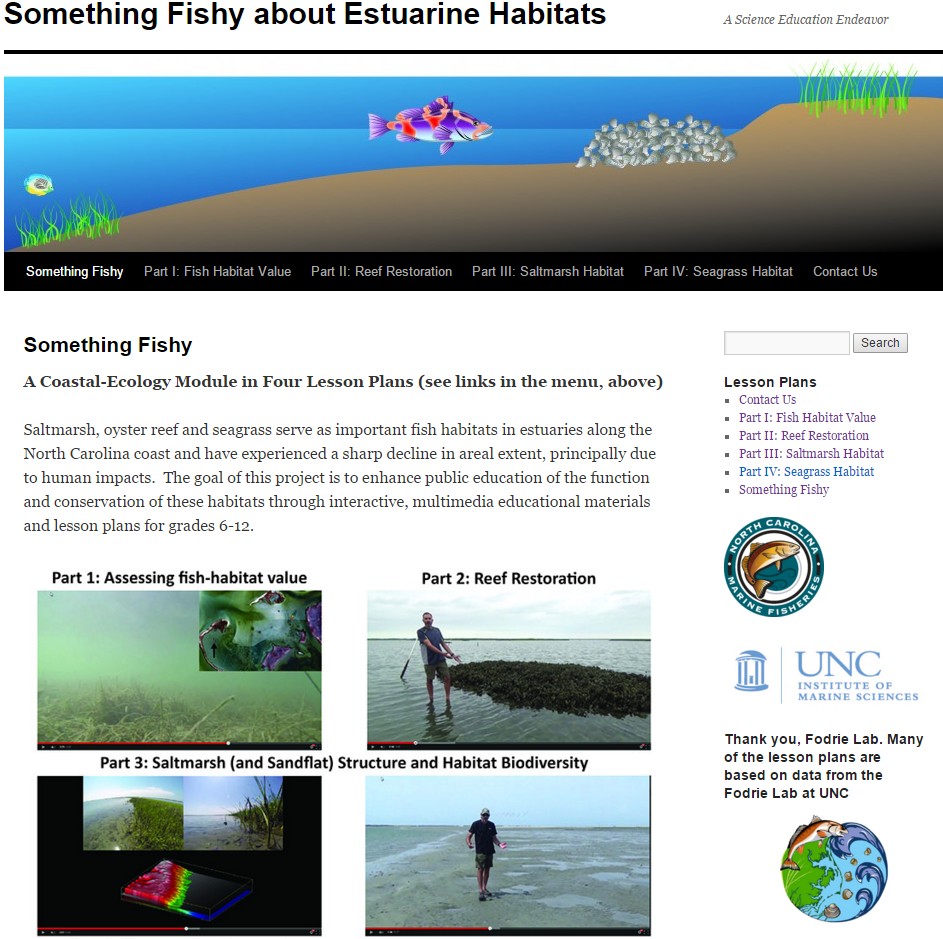Contact Information
Important:
Commitments to diversity and inclusivity are fundamental to the Rodriguez Lab and UNC-EMES’s mission.

Not really what Core Banks looks like, but a fun sticker.
Lab Musings (mostly)
- RT @annesmileyy: The 2022 @UNC_EMES grad student retreat was amazing! Loved spending time outdoors with fellow students and learning about… 08:27:27 PM October 12, 2022 from Twitter for iPhone ReplyRetweetFavorite
- RT @susanalesecohen: Have you met @ENEC_UNC graduate student @AndrewZachman? He studies the impact of forest stand structure and fire freq… 08:12:33 PM September 13, 2022 from Twitter for iPhone ReplyRetweetFavorite
- RT @UNCims: Did you catch the first field site blog post? Check it out! Stay tuned for a new post later this week. 06:00:09 PM September 11, 2022 from Twitter for iPhone ReplyRetweetFavorite
Lesson plans for middle- and high-school teachers that focus on estuarine fish habitats can be found here.
-
Recent Posts
- Explaining the wide range of salt marsh carbon accumulation rates August 12, 2022
- Working with John Anderson for 30 years June 18, 2022
- Elevations where oyster reefs grow best increase as they age June 3, 2021
Archives
Meta
Category Archives: Uncategorized
Beware: measuring beach erosion with 2-D profiles can yield spurious results
Why is Ethan so happy? Well, he just published a new paper in Earth Surface Processes and Landforms entitled, “Evaluating proxies for estimating subaerial beach volume change across increasing time scales and various morphologies“. In the paper, Ethan critically evaluates … Continue reading
Posted in Uncategorized
Leave a comment
Using a Quadcopter/GoPro combo to measure morphologic change from above
In the past we have relied on aerial photography when measuring the morphology of washover fans. These fans are constantly changing shape, but we aren’t able to document these changes because images taken from a plane are only collected every couple … Continue reading
Posted in Uncategorized
Leave a comment
Where do coastlines stabilize following rapid retreat?
Bayhead deltas are located where rivers flow into estuaries. They have broad low-elevation plains that are sensitive to small increases in the rate of sea-level rise. In the past, when sea level was rising at a rate of 1 m … Continue reading
Posted in Uncategorized
Leave a comment
Inspiring students work with teachers
Ethan and Justin created SciREN, the Scientific Research and Education Network, to establish a forum through which scientists can efficiently provide teachers scientific resources for the classroom. The first event was held at the Pine Knoll Shores Aquarium in April … Continue reading
Posted in Uncategorized
Leave a comment
Floodplain sediment storage
Anna Jalowska has been monitoring sediment storage on the Roanoke River floodplain for about three years. She has deployed feldspar marker beds and water-level loggers from the mouth of the river near Albemarle Sound to about 15 km up river … Continue reading
Posted in Uncategorized
Leave a comment
Justin Ridge selected for NCSG and NCCR’s coastal research fellowship
Justin Ridge just learned that he was awarded a North Carolina Sea Grant and N.C. Coastal Reserve’s Coastal Research Fellowship for his proposal entitled: LANDSCAPE CONNECTIVITY INFLUENCES GROWTH AND ACCRETION IN TEMPERATE BIOGENIC REEFS AND ADJACENT SALT MARSHES. The fellowship … Continue reading
Posted in Uncategorized
Leave a comment
Teacher workshop focused on intertidal habitats
We are taking applications from middle and high school science teachers to participate in a workshop at IMS in the Spring of 2014. The goal is to create lesson plans using data-rich movies of intertidal habitats with emphasis on fish … Continue reading
Posted in Uncategorized
Leave a comment
Oyster-reef bit airs on Quest, The Science of Sustainability
Back in July we spent the day with David Huppert, who was producing a video story on oyster-reef restoration for the PBS show Quest. He tagged along with us while we collected some laser-scanning data from a natural reef near … Continue reading
Posted in Uncategorized
Tagged ocean, outer banks, oysters, pbs, public media, QUEST, reef, restoration, Science, timelapse, unc-tv, UNCTV, water
Leave a comment
IE class verifies Walther’s Law in the field
The Institute for the Environment (IE) class is learning about coastal geology this week by experiencing it first hand. Walther’s Law tells us that the vertical succession of facies reflects lateral changes in environment. That concept is an important part of … Continue reading
Posted in Uncategorized
Tagged Bogue Banks, flood-tidal delta, Institute for the Environment, UNC, Walther's Law
Leave a comment


